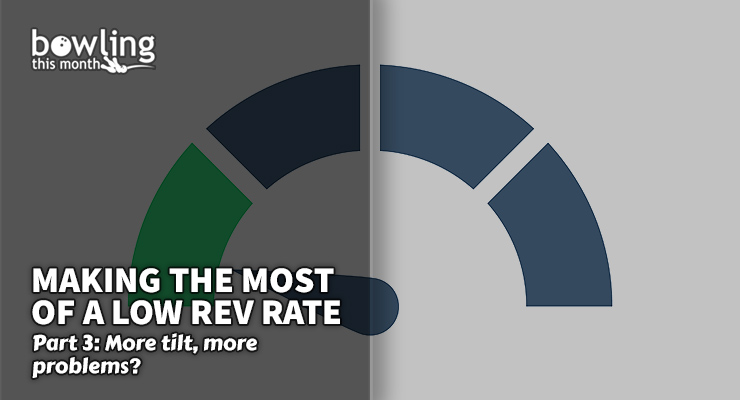Article Contents
- 1. What is a spinner?
- 1.1. Zeroing in on the relationship
- 2. Advantages of higher axis tilt
- 3. Weaknesses of higher axis tilt
- 4. The spinner-roller
- 5. Tackling spinner-roller weaknesses
- 5.1. Layout options
- 5.2. A unique ball surface preparation
- 6. The spinner-turner
- 7. Tackling spinner-turner weaknesses
- 8. Final thoughts
Note: This article is only available to Bowling This Month subscribers.
So far in this series, we’ve covered three of the basic types of lower rev rate bowler styles: gunners, rollers, and turners. To wrap things up, we’ll cover the spinner type. To be clear, this isn’t referring to helicopter-style spinners, a unique style of bowling unto itself. Rather, this article will cover bowlers whose axis tilt dominates their axis rotation and rev rate.
What is a spinner?
What do I mean by axis tilt dominating axis rotation and rev rate? Well, the three main ingredients of the bowling release are axis rotation, axis tilt, and rev rate. Ball speed also plays an important part, so we can’t leave it out of the equation completely, but let’s focus on the tilt, rotation, and rev rate relationship.
Rev rate is like the lead singer of a band. It gets all the attention, but even the best singers need a band behind them. Enter axis rotation and axis tilt.
Axis rotation is like the lead guitarist. They get the second-most amount of attention in the band. Combined with rev rate, they’re a one-two punch. When listening to music, the soaring vocals and the incredible guitar solo tend to be the highlights. But there’s an important balancing act between the two so things can be in harmony.
In bowling, having no axis rotation will make the ball go straight no matter how much rev rate you have, so you need at least a little. More importantly, having the right amount of rotation is what will create the right kind of ball reaction and hook shape for the conditions you are facing.
Axis tilt is like the rhythm section of the band. If it’s doing its job, you barely notice it, but when the rhythm section isn’t doing the job correctly, the band is lost without them.
Axis tilt works the same way. Even though rev rate and axis rotation get all the attention, it really doesn’t take much for axis tilt to start to ...
Already a premium member? Click here to log in.


